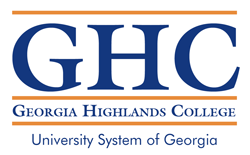New in the World of Travel
Daily Per Diem
- 11.9.12: Per Diem allowances are calculated based on last location of the travel day. For non-overnight travel, the calculation is based on the last business location. For overnight travel the calculation is based on the location of lodging for each night of travel. 75% of per diem is now calculated for date of return and departure. For example: if $28 total reimbursement, $28 x 0.75 = $21 allowable on travel departure and return day. 75% of per diem is also calculated for single day trips when travel is greater than twelve (12) hours or more than fifty (50) miles from home or headquarters. If a meal is provided at no cost in conjunction with travel, the full meals per diem reimbursement rate is reduced by full amount of the appropriate meals after the 75% proration. For example: per diem allows $28 total reimbursement for the day and if lunch was provided at no cost on travel departure or return, then the total reimbursable amount for the day would be $15.75 ($28 – $7 for lunch] = $21 x 0.75 = $15.75)
Lodging
- 11.9.12: Destination must be more than fifty (50) miles from main campus or residence to qualify for lodging expenses. Employees traveling within the state on official business are exempt from paying county or municipal excise tax on lodging. Travelers are required to submit a copy of the hotel tax-exemption form when they register at hotel. All lodging claims must be documented by receipts. Receipts submitted must be a hotel receipt with a zero (0) balance that includes room cost, mandatory parking and taxes only. Express checkout will not provide the proper receipt.
Expense Report
- 11.9.12: Submission of expense report must be within forty-five (45) days of travel. Expenses submitted in excess of forty-five (45) calendar days will not be reimbursed. Travel expense reports may be selected for audit at any time and all required receipts must be retained by the traveler for three (3) years after the travel date if not attached to the expense report.
Mileage
- 11.9.12: For non-campus to campus travel, Vehicle Cost Comparison must be used to determine expense and efficiency PRIOR to travel in order to be granted Tier 1 approval. Traveler is authorized to use personal vehicle only when it is the least expensive option and no temporary vehicle is available or the supervisor determines in writing that the least expensive option is not efficient.
Airfare
- 11.9.12: Lowest Logical Airfare should be chosen. This means the lower cost of flights should be chosen within two (2) hours before or after the preferred flight time when the alternative flight saves $200 or more round trip. Connecting flights should be chosen over non-stop if the connection does not add more two (2) hours to travel time, saves $200 or more and does not require a change of airline. The State will only reimburse a maximum of one (1) piece of checked luggage. If refundable fare must be used, the difference in the cost should not exceed $150. Business class is reimbursable for international flights only if nonstop and greater than ten (10) hour flight. Federal regulations require that U.S carriers be used for foreign travel on trips funded by federally sponsored programs.
